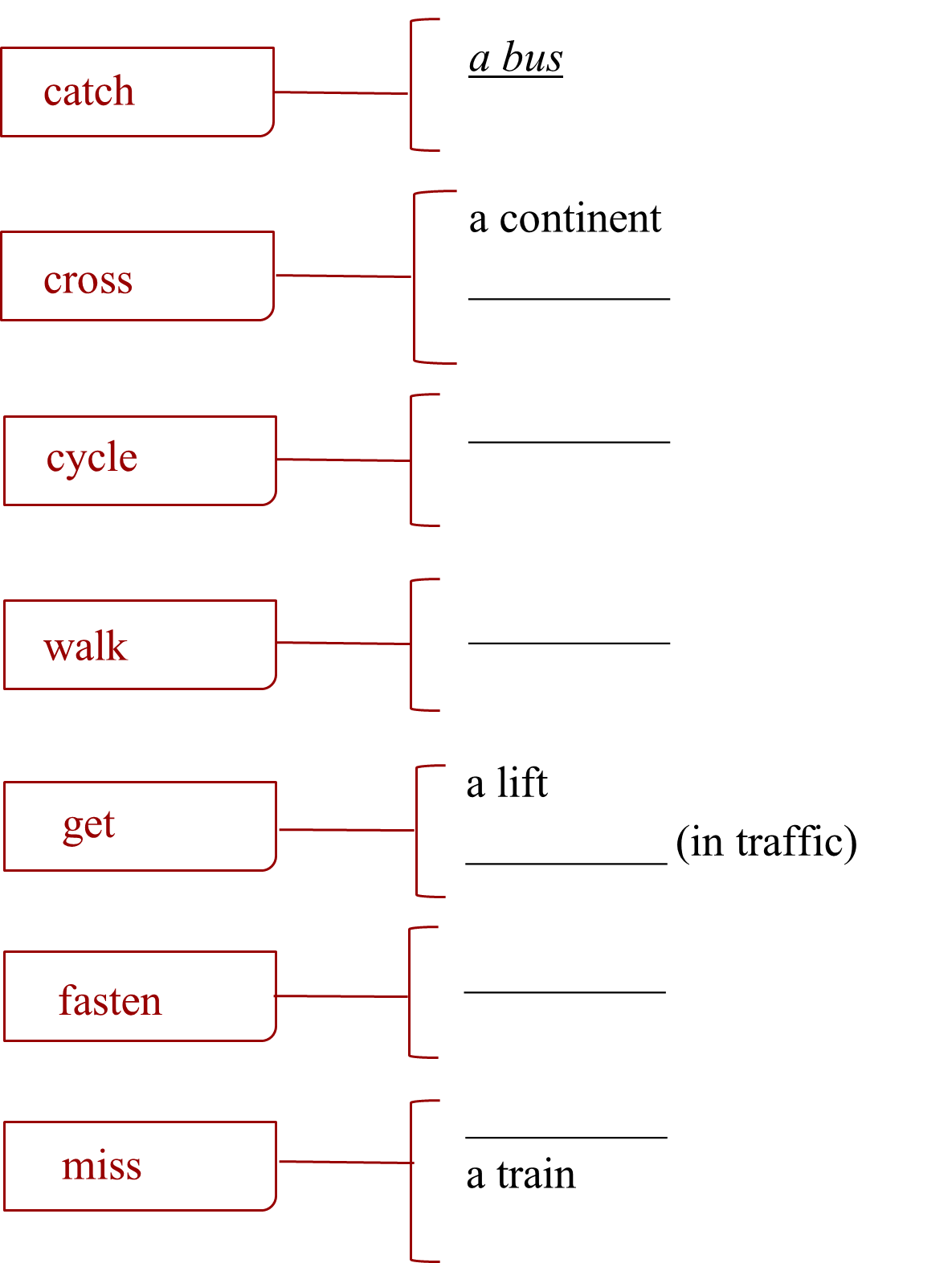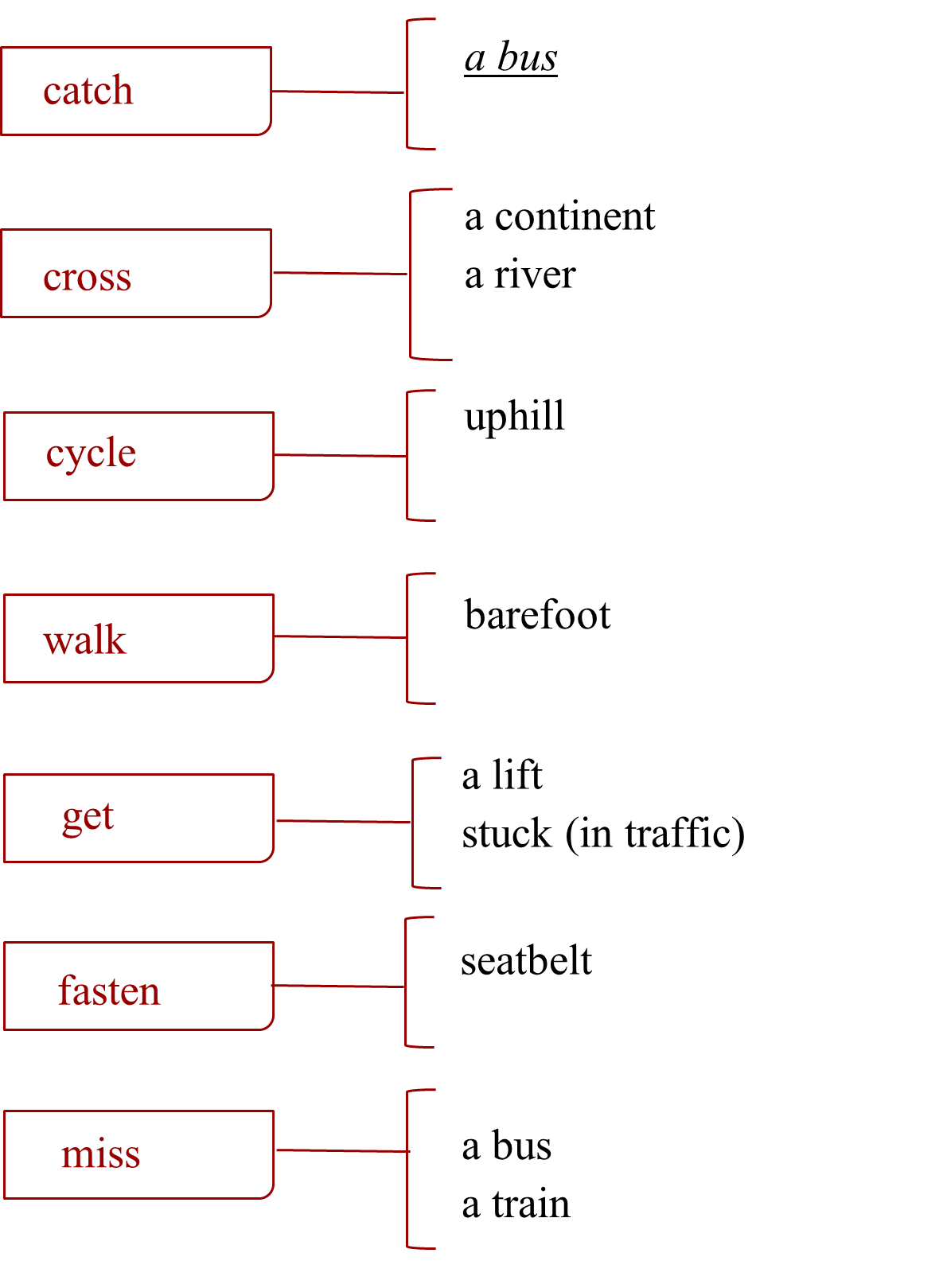Tiếng Anh 11 Unit 6 6.1 Vocabulary1. Look at the photos. In pairs, answer the questions. 2. Read the introduction to Extreme journeys to school and match students' comments 1-6 with photos A-F. 3(6.01) Listen to the report. Then complete comments 1-6 in Exercise 2 with reasons a-f. 4 (6.02) Complete the list with the words in red in the text and Exercises 2 and 3. Then listen, check and repeat. Quảng cáo
Lựa chọn câu để xem lời giải nhanh hơn
Bài 1 1. Look at the photos. In pairs, answer the questions. (Nhìn vào những bức ảnh. Trả lời các câu hỏi theo cặp.) 1.Do children in Việt Nam go to school by these means of transport? (Trẻ em Việt Nam có đi học bằng các phương tiện này không?) 2. If yes, where and how? (Nếu có, ở đâu và như thế nào?) Lời giải chi tiết: 1. Yes, children in some parts of Việt Nam go to school by these means of transport. (Có, trẻ em ở một số vùng của Việt Nam đi học bằng các phương tiện giao thông này.) 2. In Việt Nam, children can walk, ride a bicycle to school if the schools are near their house. If it is far away, they will travel by bus, train or plane. But in some poor villages in this country, children have to go on foot or by bicycle even though it is a long distance from their schools. (Ở Việt Nam, trẻ em có thể đi bộ, đi xe đạp đến trường nếu trường gần nhà. Nếu ở xa, chúng sẽ di chuyển bằng xe buýt, tàu hỏa hoặc máy bay. Nhưng ở một số ngôi làng nghèo ở đất nước này, trẻ em phải đi bộ hoặc đi xe đạp mặc dù cách trường rất xa.) Bài 2 EXTREME TO SCHOOL JOURNEYS For some students, the journey to school is just a stroll around the comer or a short drive and the biggest problems they face are getting stuck in traffic jams during rush hour or public transport delays. For others, getting to school involves crossing deserts. rivers or dangerous urban neighbourhoods. They have to travel long distances on foot, or by boat, bicycle, rickshaw or sledge.
Next time you miss the school bus and feel like complaining about your journey to school, think about these schoolchildren who don't have access to buses or even roads. Tạm dịch: HÀNH TRÌNH ĐẾN TRƯỜNG KHẮC NGHIỆT Đối với một số học sinh, đường đến trường chỉ là một cuộc tản bộ quanh góc phố hoặc một đoạn lái xe ngắn và vấn đề lớn nhất mà các em gặp phải là kẹt xe vào giờ cao điểm hoặc chậm trễ của các phương tiện giao thông công cộng. Đối với những người khác, đến trường liên quan đến việc băng qua sa mạc, sông hoặc các khu đô thị nguy hiểm. Họ phải di chuyển quãng đường dài bằng cách đi bộ, hoặc bằng thuyền, xe đạp, xe kéo hoặc xe trượt tuyết.
Lần tới khi bạn lỡ chuyến xe buýt của trường và cảm thấy muốn phàn nàn về quãng đường đến trường của mình, hãy nghĩ đến những học sinh không có phương tiện đi xe buýt hoặc thậm chí không có đường. 2. Read the introduction to Extreme journeys to school and match students' comments 1-6 with photos A-F. (Đọc phần giới thiệu về Hành trình đến trường khắc nghiệt và nối nhận xét của học sinh từ 1-6 với ảnh A-F.) 1 'I cross a fast-flowing river on a wire ...' ('Tôi băng qua dòng sông chảy xiết trên một sợi dây ...') 2. 'I take a short cut by cycling across a valley ...' ('Tôi đi đường tắt bằng cách đạp xe qua một thung lũng...') 3. 'I cross a valley on a homemade cable car ...' ('Tôi băng qua một thung lũng trên chiếc cáp treo tự chế ...') 4. 'I walk or run barefoot to school along a dirt track ...' ('Tôi đi bộ hoặc chạy chân trần đến trường dọc theo con đường đất ...') 5. 'I ride a donkey along a narrow winding path ...' ('Tôi cưỡi lừa dọc theo con đường hẹp quanh co ...') 6. 'I barely have time to fasten my seatbelt ...' ('Tôi hầu như không có thời gian để thắt dây an toàn ...') Lời giải chi tiết:
Bài 3 3(6.01) Listen to the report. Then complete comments 1-6 in Exercise 2 with reasons a-f. (Nghe báo cáo. Sau đó hoàn thành ý kiến 1-6 trong Bài tập 2 với lý do a-f.) a '... because my school is so remote.' b... because the suspension bridge collapsed c... because it's such a short flight." d... because I don't want to cycle uphill." e '... be cause I can't catch a bus as there aren't any." f '... because it's so deep.' Tạm dịch: (a '... vì trường tôi ở quá xa.' b... do cầu treo bị sập. c... bởi vì đó là một chuyến bay ngắn." d... bởi vì tôi không muốn đạp xe lên dốc." e '... bởi vì tôi không thể bắt xe buýt vì không có xe buýt nào." f'... vì nó quá sâu.') Bài 4 4 (6.02) Complete the list with the words in red in the text and Exercises 2 and 3. Then listen, check and repeat. (Hoàn thành danh sách với các từ được tô đỏ trong văn bản và Bài tập 2 và 3. Sau đó nghe, kiểm tra và lặp lại.) 1 cable car 2 dirt 3 public 4 rush 5 short 6 suspension 7 traffic 8 winding Lời giải chi tiết: 1 cable car: cáp treo tự chế 2 dirt track: đường đất 3 public transport: phương tiện giao thông 4 rush hour: giờ cao điểm 5 short cut: đường tắt 6 suspension bridge: cầu treo 7 traffic jams: tắc đường 8 winding paths: đường quanh co Bài 5 5(6.03) Complete the list with the underlined words in the text and Exercises 2 and 3. Then listen, check and repeat. (Hoàn thành danh sách với những từ được gạch chân trong văn bản và Bài tập 2 và 3. Sau đó nghe, kiểm tra và lặp lại.) Lời giải chi tiết:
Bài 6 6. In pairs, discuss how you often go to school every day in detail. Use the words you have learnt in this lesson. (Theo cặp, thảo luận chi tiết về việc bạn thường đến trường hàng ngày như thế nào. Sử dụng những từ bạn đã học trong bài học này.) Lời giải chi tiết: I used to walk to school when I was an elementary school- student because my school is really near my house. But now, I catch a bus because my school is a little bit remote. Everyday in the morning, I have to wake up at 4 a.m and wait at the bus stop at 5 a.m so that I am not late for school because of traffic jams. (Tôi đã từng đi bộ đến trường khi tôi còn là học sinh tiểu học vì trường của tôi rất gần nhà tôi. Nhưng bây giờ, tôi bắt xe buýt vì trường của tôi hơi xa. Mỗi sáng, tôi phải thức dậy lúc 4 giờ sáng và đợi ở bến xe buýt lúc 5 giờ sáng để không bị trễ học vì tắc đường.)
|






















